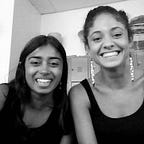Teaching Economics to Counter Bias
As part of our Social Studies curriculum, Gabby and I teach Economics to 5th graders (although next year, we are moving to 3rd grade and are developing a brand new geography curriculum this summer — stay tuned!). We are often asked how we do this and how we expect 10 years olds to understand something so complicated that many adults don’t understand fully. Our response: laying a groundwork in elementary school will help our students understand more as adults. Also, challenging and countering previously held beliefs only gets more difficult as students get older so it is essential that we explore the realities of money, poverty, and class while our students are still in elementary school and remain somewhat open-minded.
Many of the activities we use in this unit sprang from our students’ misconceptions or desires to learn more. When we start this unit, we often hear variations of “people are poor because they don’t work hard” or “if people want more money, they should get a job.” We use a variety of different simulations and activities to try to dispel these myths. First, we simulate the distribution of wealth with classroom chairs, and then with baked goods. It is a lot of fun until the baked treat comes out, and then we hear about how unfair it is (and sometimes see some real tears).
My favorite part of this simulation is hearing the students’ reflections when they realize that we really are only giving baked goods to the students designated as the “top 10%” of the income bracket (everyone else gets crumbs — use the link above to read more details). At first, they think it is a joke or that we are making a point, but will give treats to everyone eventually. No. We are dividing the doughnuts (or brownies, or cookies) the way wealth is distributed in the United States. No exceptions.
This simulation is also fascinating because it encourages students to share how, why, and when they think or talk about money. Many of them share that it is “rude” to talk about money and they worry it might make people uncomfortable. Once we give them some facts, however, they have SO many questions. They are shocked that a household income of $250k means you are in the top 2% and earn more than 98% of Americans (these statistics are from 2010–13, so they are not up to date). While these numbers are confusing and percents are relatively new to ten year olds, we have found that using the framework of If the United States were a Village of 100 People helps clarify the concepts for them.
Our next simulation is the Sinking Ship simulation. This activity has so many applications and teaches so many skills! Students have to think critically, negotiate, debate, argue, organize and so much more. They also realize their own biases when they think about which professions or roles they inherently value (senator, doctor, lawyer) and which roles they quickly discount (nanny, taxi driver, person who is currently unemployed). This activity helps our students think about power, wealth, status, and value. It’s also a reminder that circumstances can always change and humans should not be defined or limited by their experiences. Again, we often hear that the decision making process is unfair or biased. Our response: how does that relate to the real world?
This past school year, we wrote a new simulation inspired by our visit to Alta Gracia in the Dominican Republic last summer. It required a lot of planning as there were so many details to work out, but the end result was even better than we expected. We call it our Factory simulation and had the students in three groups: non-unionized factory members, unionized factory members, and office workers. You can read more about the details if you follow the link, but we found this experience really helped our students overcome the idea that “hard work” conquers all. They also talked a lot about the constant stress they were under and how not having health insurance meant they had extra unforeseen costs that could take their whole paycheck (if only I could lead some of our senators through this activity)! They also learned the importance of organizing before striking or protesting and how a power imbalance only makes those actions more risky and difficult.
Last, but certainly not least, we engage students in our beloved Pom Pom simulation which simulates privilege. We love this activity for so many reasons and it teaches us so many things about our students. They are always outraged with the process and often angry with each other (and us). I’m always amazed at how quickly the “wealthy and powerful” group moves into a defensive position of their role and how any suggestions of redistribution or helping the other groups are quickly quashed. I also love hearing the real world connections students make when thinking about who has power and privilege in our society (and who doesn’t).
An important disclaimer for every simulation is that these brief experiences are NOT THE SAME as real life and whatever emotions you feel, it does not mean that you “know what it feels like” to experience poverty, oppression, discrimination etc. However, we find that students’ perceptions change after experiencing frustration and getting a (very) small glimpse into another perspective or experience. Our students frequently relate that our Economics unit taught them “things they never heard before” and we hope they take this knowledge and awareness out into the world with them! At the very least, we hope to encourage their capacity for empathy and ability to see others as human beings regardless of their circumstances.
Originally published at teachpluralism.squarespace.com.
